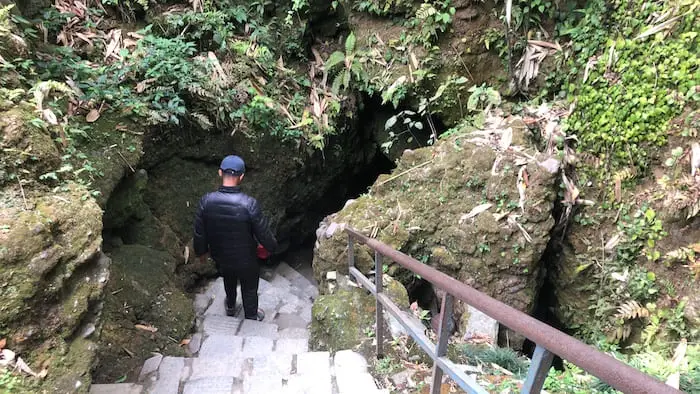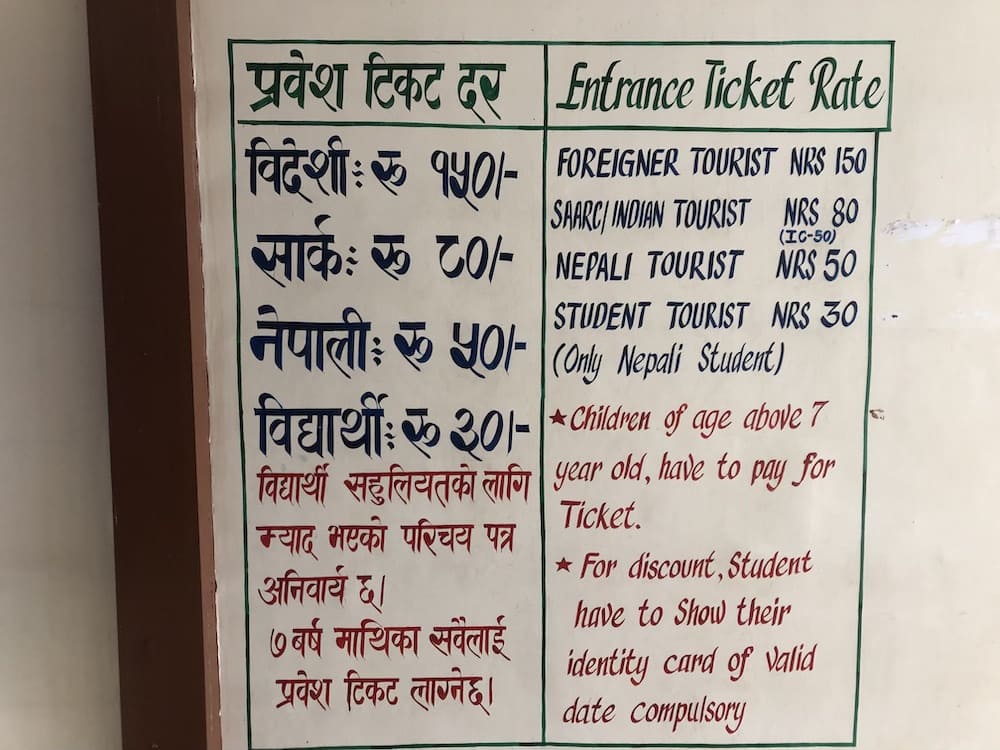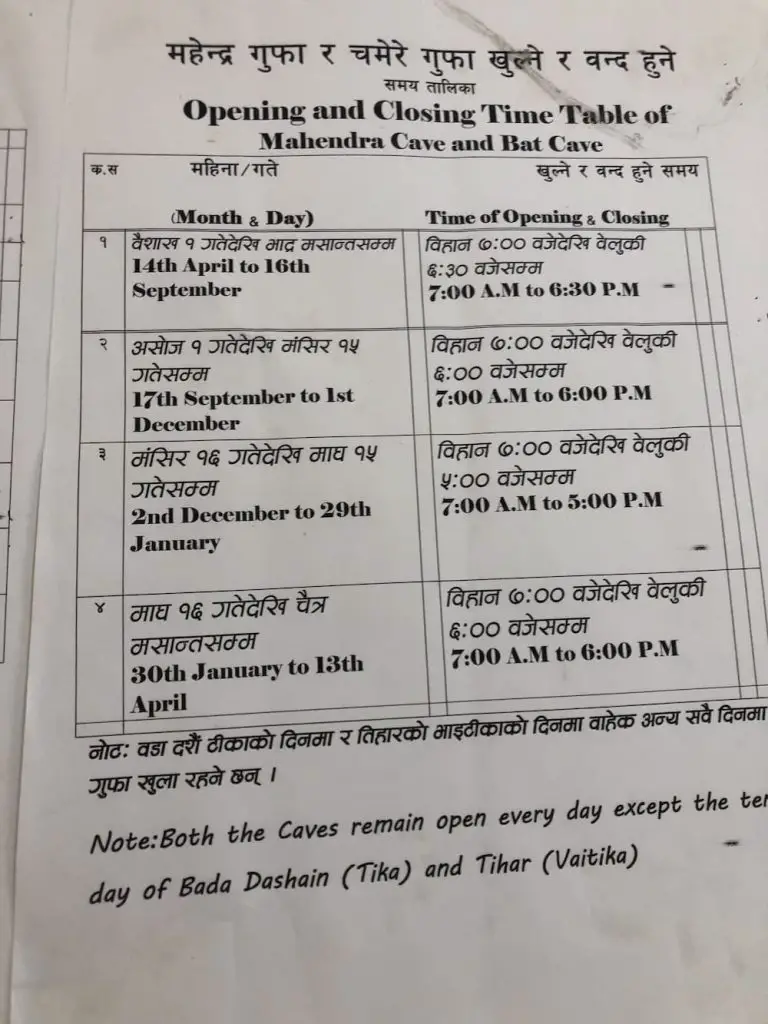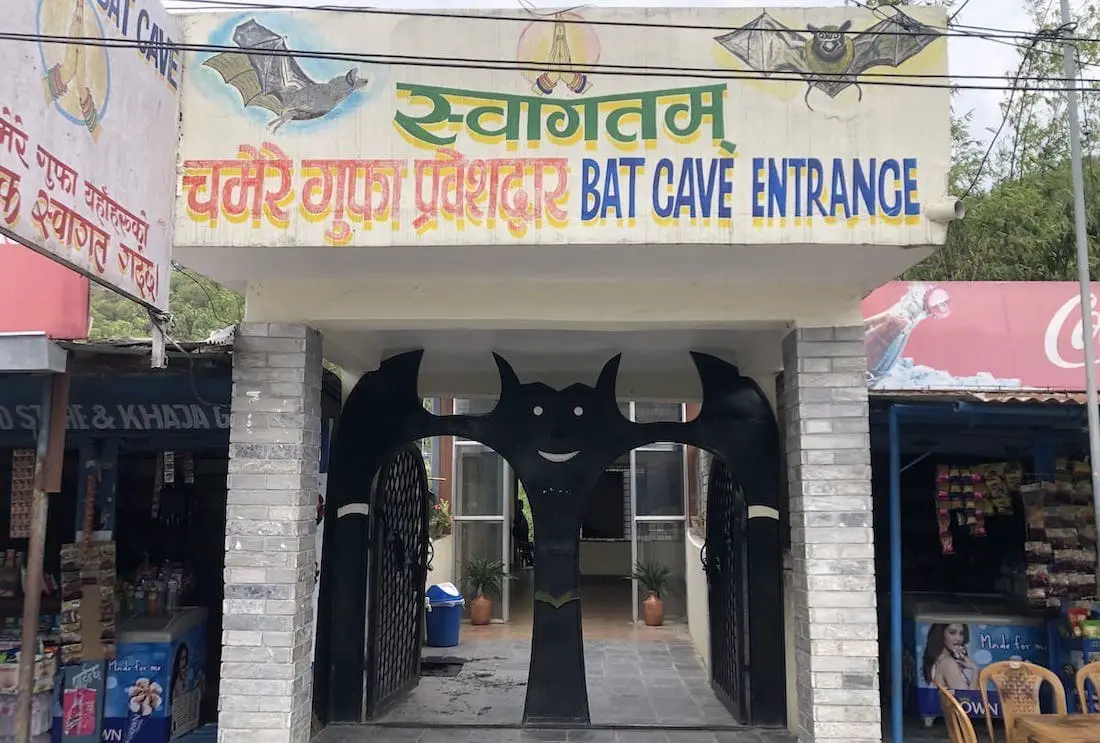The Chamero Gufa or Bat cave in Pokhara is ideal for those seeking a high level of adventure. The cave’s dark, gloomy, and humid chambers are home to thousands of bats. Most of these are Horseshoe Bats, and you can find them hanging upside down on the ceilings of the frigid caverns. The Chamero Cave, the most thrilling out of the caves in Pokhara, makes its visitors crawl and slither through its chambers to reach the exit.
If one is game, they can even make their way through a tight shaft at the end of the cave to reach the surface after exploring the entire cave for roughly 20 minutes. Claustrophobic people may want to reconsider visiting this cave because it can become very cramped.
Now let’s dive into the blog a little more and discuss everything there is to know about the Bat Cave in Pokhara (Chamero Gufa).
Overview of the Chamero Gufa in Pokhara:

Pokhara is home to several amazing caves. The famous caverns, including Mahendra Cave, Gupteshwor Cave, and Bat Cave, captivate thousands of tourists every week.
A farmer found the Chamero Gufa in 2043 (1986 A.D.). Although originally owned by the farmer on his private land, the land and the cave were eventually handed over to Bindhyabasini secondary school. The school is now in charge of overseeing and managing the cave.
As the name implies, the cave is covered in thousands of bats crawling over the walls and ceilings. With a length of 150 meters, the cave has plenty of twists and turns to explore. However, one must traverse the cave carefully as it lacks electricity lighting. Move carefully through the cave as water frequently leaks through the ceiling, leaving everything slick and damp.
The cave, which has been deeply carved into the earth and rock, has a small entrance exposed. To make the descent into the cavern easier, cement steps that lead to the mouth of the cave. The Bat Cave is roughly the same age as the Gupteshwor cave and shares many of the same features, such as stalagmites carved from limestone.
Finally, the two types of bats that are most frequently spotted in this cave are Round Leaf and Horseshoe. In some areas of the cave, you might be able to get within a foot of them all – however, be cautious while approaching them (I recommend leaving them alone altogether. They’re scary – no?) Moreover, the ground and the path can be quite slippery and, at times, lack handrails for safety.
Inside the Bat cave in Pokhara

There are two distinct ways to enter and leave the 150-meter-long cave. The entrance, which is up a set of concrete stairs, is wider than the exit. You can walk through the entrance easily, but the exit will require some crawling and climbing. Moreover, if that wasn’t enough, local legend believes that only individuals who have not sinned should travel through the cave’s exit!
Inside the cave, you will find that the chambers vary in size, with the maximum height being around 15 meters. Additionally, scattered through the chambers, Hindu gods and animal sculptures are carved inside the U-shaped cave’s interior.
You will arrive in a sizable area as you enter the cave. Numerous kinds of bats live in the limestone cave, which was constructed as a cave. With the aid of an emergency light provided by the counter, you may see them hanging upside down at the cave’s walls, corners, and ceilings. The several bat species that may be found in this cave eat insects and fruits. During the winter, up to 18 different species of bats can be seen in the cave.
One of Pokhara’s top tourist destinations, the natural cave is home to numerous stalactite and stalagmite rock formations. This cave’s main draws are the thousands of bats on the walls and ceilings and the exciting exit. However, remember that if you are claustrophobic, you may want to rethink your visit, as the cave gets extremely confined at some points. Another option would be to visit the cave and exit back out the entrance instead.
How much is the entrance fee to Chamero Gufa?

The entrance fee at Chamero Gufa is NPR 50 for Nepalese citizens, NPR 30 for students, NPR 80 for SAARC country nationals, and NPR 150 for foreign tourists.
Along with your entrance fee, you will also receive a light to assist you while caving. Additionally, I suggest hiring a guide to hold the torch, mark the path, and share insightful information about the cave. You can get a guide for about NPR 200! Which I strongly suggest as they helped me climb through the cave at the end, while other people were turning around.
In total, you can tour the cave in about 20 minutes – excluding the time taken for taking photos and videos.
When is the Chamero Gufa in Pokhara open?

The Bat Cave or Chamero Cave in Pokhara is open daily from 7:00 Am to 6:00 Pm.
The times for the cave to be open during the year fluctuate depending on the season.
Additionally, certain festivals in Nepal or other religious events may alter the times the cave is open. The image to the left gives a breakdown of when the bat cave is open in Pokhara!
Where is the Bat Cave in Pokhara, Nepal?
The Bat Cave is located in Batulechaur, Pokhara, Kaski, in Nepal. The Chamero Cave is approximately six kilometers away from Chipledunga. The cave is roughly 9.5 kilometers away from Lakeside in Pokhara. Finally, the cave is a 10-minute walk from Mahendra Cave.
Although the distance between the cave and Lakeside is almost 10 kilometers, other activities are also near the Bat Cave. Some of these activities include:
- Sarangkot
- Mahendra Cave
- Seti River Gorge
- Gorkha Memorial Museum
- Jangchub Choeling Monastery
Chamero Gufa Management:
Although the Chamero Cave was originally on private land owned by a farmer, it is now owned and managed by Bindhyabasini secondary school.
The secondary school looks after the upkeep and management of the cave. This has made the cave popular with tourists and for educational school trips.
Chamero Gufa in Pokhara: Crawling through the Bat Cave

You may not be able to meet Bruce Wayne in the Bat Cave in Pokhara, but you will have the chance to see thousands of his friends. For the adventurous, visiting the cave will allow them to see bats hanging from every dark and damp cranny of the cavern. Personally, I think this is the most exciting cave out of the main caves in the city.
Although more exciting and thrilling, the Chamero Gufa in Pokhara is not for everyone. If you get claustrophobic or do not want to crawl and climb on rocks, you may want to pass on this experience. That being said, even if you sit out the experience, you should still accompany your family and friends to the underground cavern, as there are plenty of other activities to do in the area.
However, for the adventurous, the cave is a great way to explore the depths of Pokhara. As one of the many activities I have listed on my Pokhara travel guide, I strongly recommend checking the cave out! Just make sure you are ready to get a little dirty while caving.
